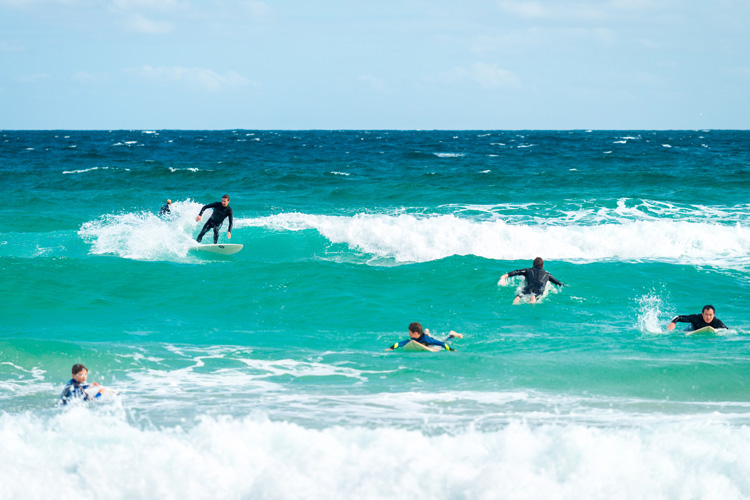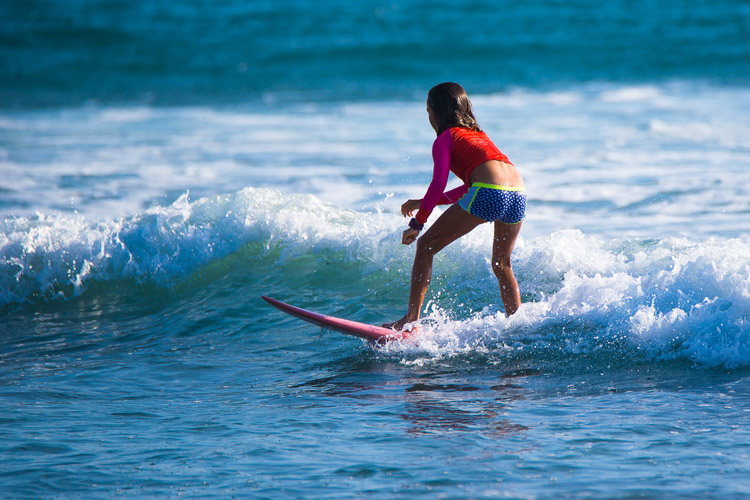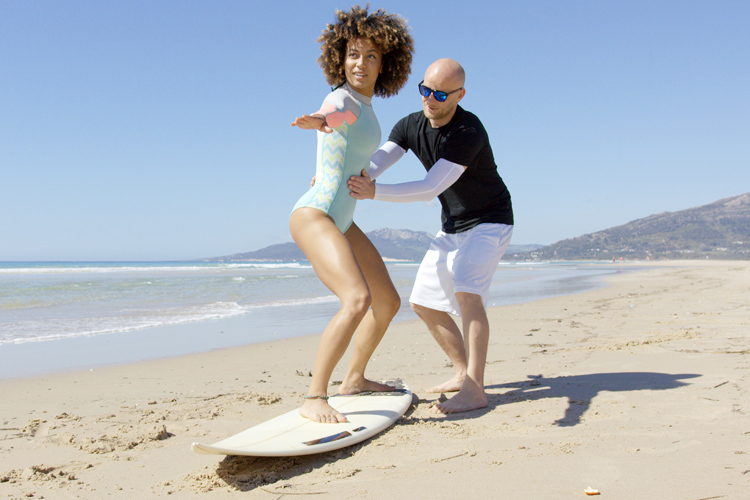It is one of surfing's frequently asked questions. How long does it take to learn to stand up on a surfboard? How hard is it to become a surfer?
Surfing is not the most demanding sport in the world. But if you're willing to give it a go, then there are some things you should know before living the dream.
The first thing you need to remember is that surfing is not something you try during summer vacations and is definitely not a cool pastime that can be enjoyed any day of the year.
Surfing is a sport with thousands of details, techniques, and gear hacks. It can even put your life at risk, so there's no way you can simply buy a board and chase the best waves in the world.
Surfing requires dedication and practice. The more waves you catch, the faster you'll learn and progress.
That said, the good news is that learning the basics is reasonably quick and uncomplicated. Once you grasp the theory behind the surfboard and the wave, you're ready to get wet.
As you progress through to intermediate and advanced levels, there will be much more to improve, correct, and polish. But that's another dance.
The More You Practice, The Faster You'll Learn
So, how fast can you learn to surf? How long do you need to stand on a surfboard and glide across the glassy waves?
Learning to surf requires between two hours and one month of practice. If you're struggling for more than two months to ride a wave, then there's something wrong with you.

The first thing you'll need to master is lying and balancing on a surfboard - that could take you between half an hour and two or three hours.
The next step is to paddle for a wave and catch it - that's another hour or two, depending on your fitness level.
Finally, the hardest part is the pop-up move. You'll fall off the surfboard a lot and get pounded by closeout waves. It will happen 50 times or more, and that's fine.
However, if you overcome that initial frustration - and sooner or later, you will - it will be like riding a bike. Once you get used to it, it's for life.
People who book weekend surf lessons tend to learn slower than newbies who own a board and hit the water two, three, or four times a week.
Depending on your commitment, aptitude for water sports, and physical exercise in general, you may not need much time to earn the title of surfer.
Age is not a decisive factor either. A healthy and fit 60-year-old beginner will always learn faster than an obese 16-year-old starter.
So, although it can be impossible to tell precisely the amount of time needed to ride a wave, we could say that, equipped with a big and wide surfboard, a total of between five and 20 hours are enough.
The majority of beginner surfers fit the above parameters. Then, it's only a matter of persistence, patience, and motivation.
The more waves you catch, the better you get. The more you observe others, the faster you'll learn. The more you want it, the faster you'll trim a wave.
The most common problem beginner surfers struggle with is foot positioning. In most cases, they're too far back on the board.

Surfing involves a series of physical and mental skills that should be considered by someone who wants to engage with it and enjoy the experience to the fullest.
The quality of the waves, the regularity of practice, the swimming skills, the knowledge of the ocean, and the appropriate equipment will also speed up or slow down the learning curve.
Nevertheless, the most important characteristics are as follows:
Endurance, Strength & Power
Paddling is undoubtedly one of the most demanding skills in surfing because you have to learn how to balance on a surfboard and then paddle for the waves simultaneously.
There's quite a lot of paddling in surfing because you'll need to get out the back whenever you finish a wave, correct your position constantly, and, last but not least, paddle for the best waves.
Your endurance and strength levels will be tested, especially when you're in the water for more than an hour.
Surfing can be an intense outdoor activity, and quick bursts of power are often required to overcome the natural liquid challenges.
Agility & Flexibility
People normally refer to surfing as an action sport. And they're right.
Surfers must be in relatively good shape to respond to the behavior of the waves. It's a motion sport, so you're expected to bend your knees, rotate your hips, shift your feet back and forth, etc.
If you can't get from a prone to an upright position relatively fast, you won't be able to take off on a wave and ride it in a standing position.
Waves continuously force us to adjust the surfboard and the body stance to their unstoppable breaking force.
Nerve
It's paramount that anyone who takes on surfing feels confident and comfortable in the water and the waves.
Without the right spirit, a first-timer won't learn the tricks of the trade. Do you fear small waves? If your answer is yes, then you should probably try another sport.
In conclusion, surfing stands roughly in the middle of the "Degree of Difficulty Sports Ranking." It is not as hard as gymnastics, wrestling, and even tennis, and slightly more difficult than badminton and bowling.
